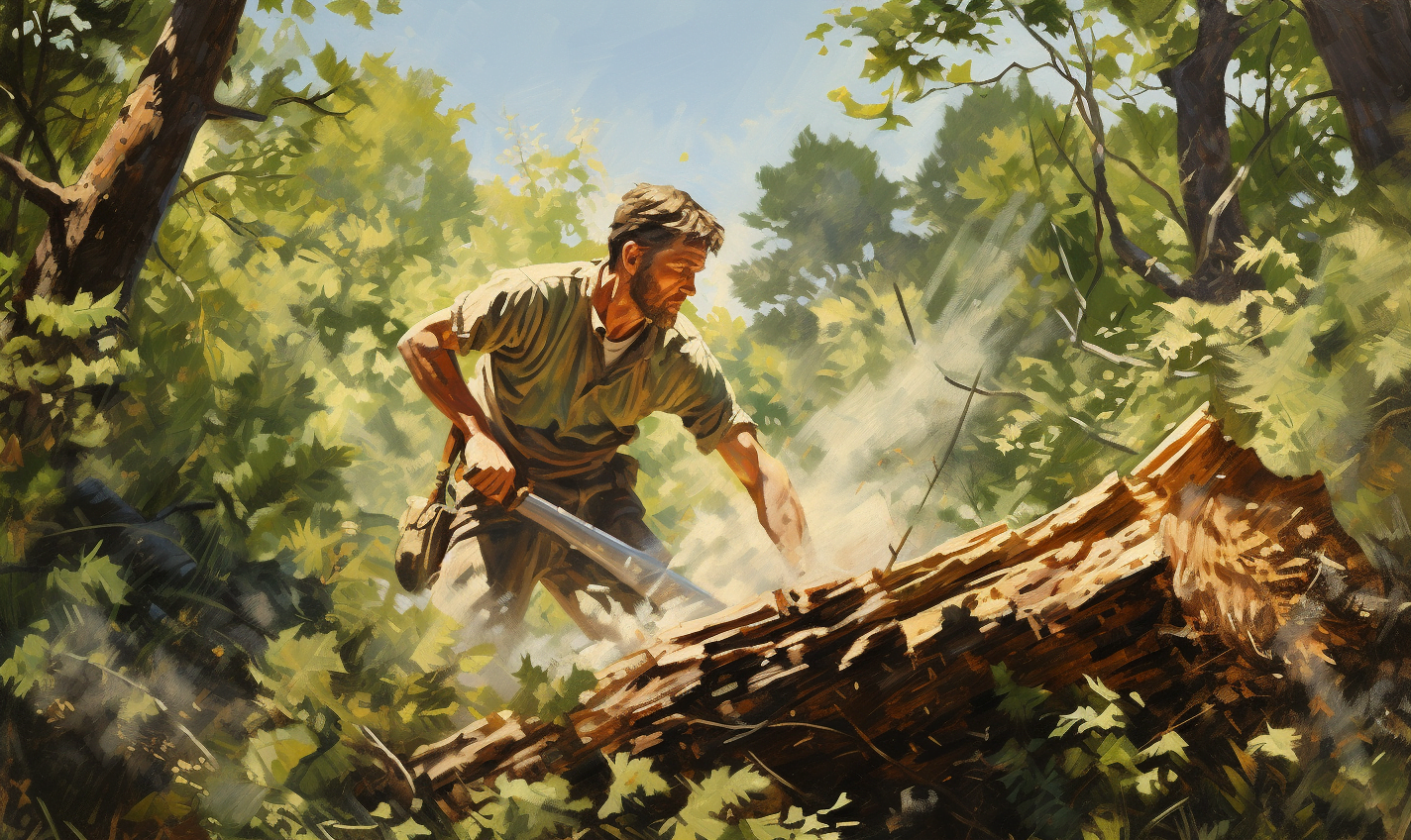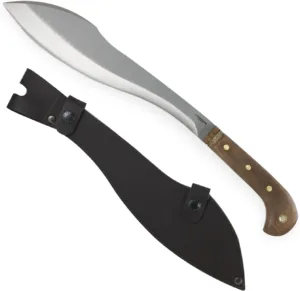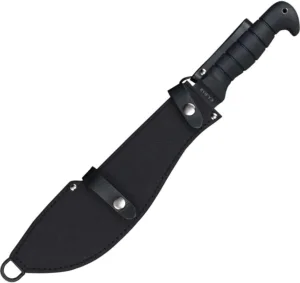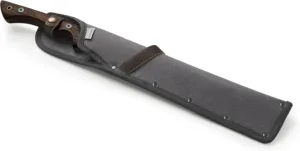
A Mighty Blade: The History and Uses of the Machete
The machete, a sturdy blade synonymous with jungles and farmers, boasts a rich history and a remarkable versatility. Its uses range from clearing foliage to chopping firewood, making it a beloved tool for countless cultures around the world. But what makes it stand out compared to other cutting tools like axes and hatchets? Let’s delve into the machete’s fascinating past and explore its unique strengths.
Just looking for the top picks? These are the top 3 best machetes available today:
Continue reading for a closer look and more particulars.
Early Origins:
Although pinpointing the exact origin is challenging, evidence suggests that machetes were initially used by pre-Columbian indigenous peoples in Central and South America. Crafted from hardwoods and sharpened with primitive tools, these early blades served various purposes, from building shelters to hunting and gathering food.
Influence of the Spanish:
The arrival of Spanish conquistadors in the 15th century marked a turning point. They introduced machetes made from metal, which were sturdier and more efficient. These “corvos” or “alfanjes” quickly gained popularity, becoming essential tools for clearing paths, harvesting crops, and even combat.
Global Expansion:
Through trade and colonization, the machete spread rapidly. It reached the Caribbean, Africa, Southeast Asia, and beyond, adapting to local needs and evolving into diverse forms. In the Caribbean, for example, the machete became a symbol of resistance against slavery, wielded by freedom fighters during rebellions.
Machete vs. Axe/Hatchet:
So, what sets the machete apart? Compared to axes and hatchets, it excels in several ways:
- Versatility: The machete’s long, curved blade allows for both chopping and slashing motions, making it ideal for clearing brush, pruning branches, and harvesting crops. Axes and hatchets, primarily designed for splitting wood, struggle with these tasks.
- Maneuverability: The lighter weight and one-handed use of the machete give it superior maneuverability in tight spaces or dense foliage. Axes and hatchets, usually heavier and two-handed, can be unwieldy in such situations.
- Multifunctionality: Machetes often have additional features like bottle openers or saws, making them even more versatile tools. Axes and hatchets typically lack these added functionalities.
Cultural Importance:
Beyond its practical uses, the machete holds cultural significance in many societies. It’s a symbol of hard work, resilience, and self-reliance. In some cultures, machetes are passed down through generations, imbued with sentimental value and stories of the past.
Top Contenders for the Best Machete:
1. Condor Tool & Knife, Amalgam Machete:
The Condor Tool & Knife Amalgam Machete is a fascinating hybrid tool that combines the best features of two popular machete styles: the kukri and the parang.
Here’s what makes it special:
- Design: Its blade is 11.72 inches long with a distal taper, meaning it gets thinner towards the tip. This provides a good balance between chopping power and maneuverability. The kukri-inspired forward curve near the tip excels at slashing through vegetation, while the parang-like belly in the middle adds heft for chopping thicker materials.
- Material: Made from 1075 high-carbon steel, the blade is known for its durability and edge retention. It’s also relatively easy to sharpen in the field.
- Handle: The comfortable walnut handle is contoured for a secure grip, even in wet conditions. The pommel at the end adds counterweight for better balance.
- Versatility: The Amalgam Machete is a true all-rounder, suitable for various tasks like clearing brush, chopping firewood, preparing food, and even digging. Its compact size makes it easy to carry and use in tight spaces.
Here are some of the pros and cons users have mentioned:
Pros:
- Sharp and sturdy blade: The high-carbon steel holds an edge well and can handle tough jobs.
- Comfortable handle: The walnut handle is grippy and provides good control.
- Balanced design: The machete feels well-balanced and swings smoothly.
- Versatile: Can be used for a variety of tasks.
Cons:
- A bit heavy: Some users find the machete to be heavier than they expected.
- Leather sheath is basic: The included sheath is functional but not the most high-quality.
Overall, the Condor Tool & Knife Amalgam Machete is a well-made and versatile tool that’s a good choice for anyone looking for a durable and effective machete. It’s especially suited for those who appreciate the unique combination of a kukri and parang design.
Here are some additional things to consider:
- The Amalgam Machete is available in a few different variations, with different blade finishes and sheath options.
- Condor Tool & Knife is a reputable company known for making high-quality knives and machetes.
2. Ka-Bar KA1248-BRK Machete Cutlass:
The Ka-Bar KA1248-BRK Machete Cutlass is a popular choice for those seeking a versatile and reliable machete for various tasks. Here’s a rundown of its key features:
Design:
- Cutlass-style blade: This 11-inch blade features a classic cutlass profile, with a broad belly towards the tip and a straight spine. This design excels at chopping and slashing through vegetation, making it ideal for clearing brush, pruning branches, and harvesting crops.
- 1085 carbon steel: This high-carbon steel provides excellent durability and edge retention. It’s also relatively easy to sharpen in the field.
- Hollow grind: The hollow grind on the blade reduces weight and makes it easier to swing, while still maintaining enough thickness for chopping power.
Handle:
- Kraton G handle: This ergonomic handle provides a comfortable and secure grip, even in wet conditions. The Kraton G material is also resistant to slipping and provides good vibration dampening.
- Full tang: The blade extends throughout the handle, providing added strength and durability.
Sheath:
- Black Cordura® and leather sheath: This durable sheath protects the blade and allows for easy carrying on your belt.
Overall, the Ka-Bar KA1248-BRK Machete Cutlass is a well-made and versatile tool that’s a good choice for a variety of tasks. Here are some of its pros and cons to consider:
Pros:
- Sharp and durable blade: The 1085 carbon steel holds an edge well and can handle tough jobs.
- Comfortable and secure grip: The Kraton G handle makes the machete easy to use for extended periods.
- Lightweight and well-balanced: The machete is easy to swing and maneuver.
- Durable sheath: The Cordura® and leather sheath protects the blade and offers carrying options.
Cons:
- Not ideal for heavy chopping: The cutlass-style blade is not as thick as some machetes designed specifically for chopping firewood.
- Leather sheath can require maintenance: The leather needs to be treated regularly to prevent drying and cracking.
Summary:
The enduring legacy of the machete is a testament to its utility and adaptability. From its modest origins to its widespread use, this powerful blade has etched its mark on history and remains an indispensable tool for millions worldwide. When you encounter a machete, take a moment to reflect on its storied past and the distinct attributes that set it apart from the rest.



